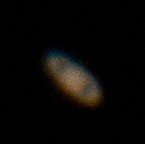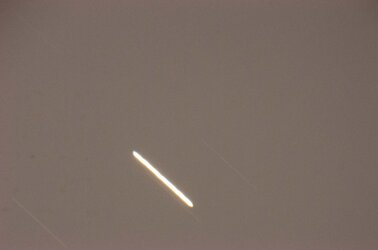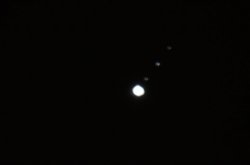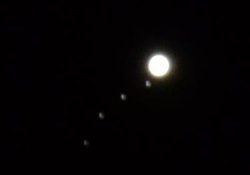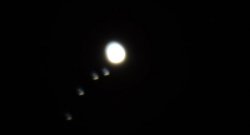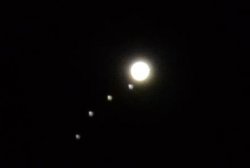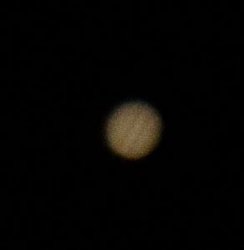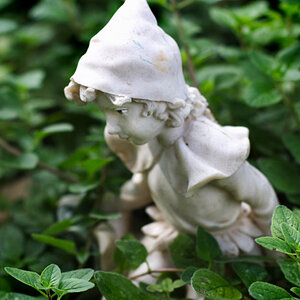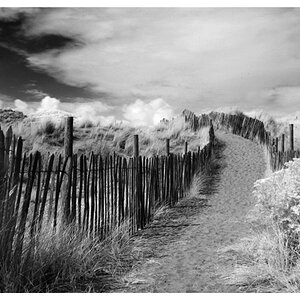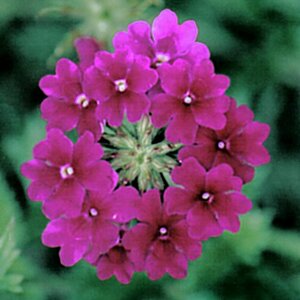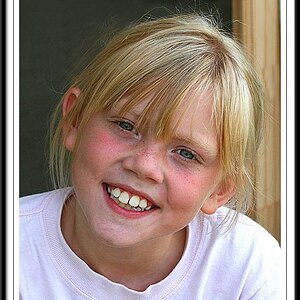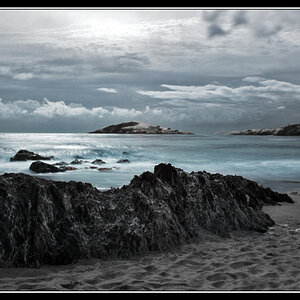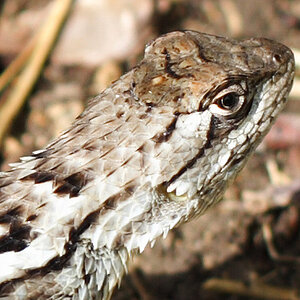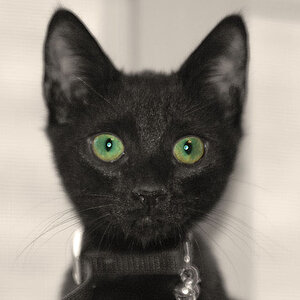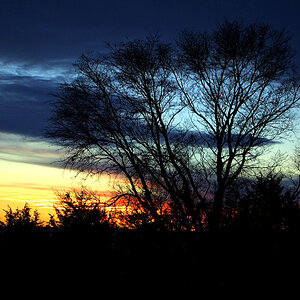- Joined
- Aug 15, 2013
- Messages
- 13,695
- Reaction score
- 3,369
- Location
- SE Michigan
- Can others edit my Photos
- Photos OK to edit
So I've been running a few tests lately of my d7000 vs d600
The Moon. This is easy. On the 2000mm The d600 wins hands down. Forget about the ISO and stuff initially as the FF makes the Moon one big object that does not require any cropping what-so-ever. So that makes me happy. Plus better ISO control, etc
Now on to Saturn. This on my telescope (which is not an expensive one by far) with no tracking turned on. No magnification. Just using it as a big lens. Now Saturn moves *fast* across the sky. This is a 30 second uncropped exposure of it:
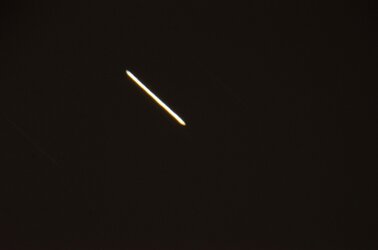
Thus shutter speed is still an issue. Thus ISO and low light is too.
Here is an uncropped of the d600. Do you see it? It's a little spec there
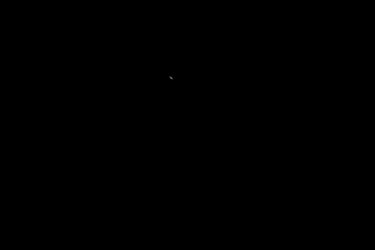
You have to heavily crop it, like this:
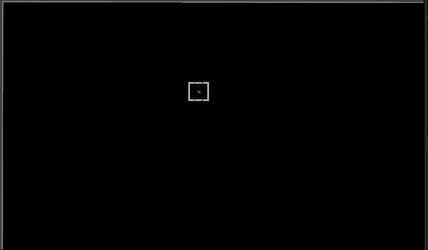
And the Final
ISO 2000 // 1/40 sec
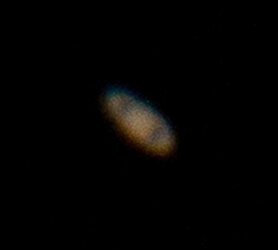
and the d7000
- total image
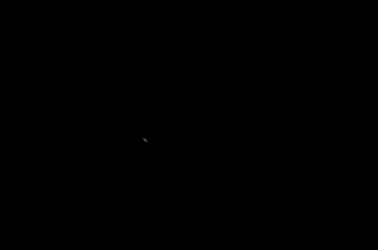
Cropped image
ISO 2000 1/50 shutter
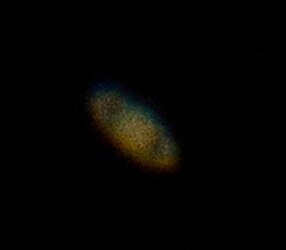
I have more tests but these came out best. It's a fast thing moving across the sky and getting focus .. I forgot how hard it is. My spotter scope is close to dead on which makes it easier. As what you see through the scope eyepiece is *not* what you get through the camera, in the terms of focusing. Through the eyepiece you can focus on it and it's nice (magnification eyepieces makes it large and sharp). But through the camera before refocusing it looks like this .. that circular thing in the lower right. So the camera then becomes your only visual aid other than the spotting scope which is your basic crosshair type.
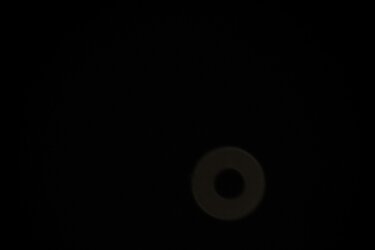
Next time I'll add magnification to the test. And this provides a bit more balance to the scope. In the above tests I used the camera in the back port, which does not use the mirror. Now for magnification I'll be using the top port which does use the mirror (and also more pieces of glass in the magnification device) and may decrease the sharpness.
I tried to use my iPhone through the eyepiece .. that didn't work at all.
The Moon. This is easy. On the 2000mm The d600 wins hands down. Forget about the ISO and stuff initially as the FF makes the Moon one big object that does not require any cropping what-so-ever. So that makes me happy. Plus better ISO control, etc
Now on to Saturn. This on my telescope (which is not an expensive one by far) with no tracking turned on. No magnification. Just using it as a big lens. Now Saturn moves *fast* across the sky. This is a 30 second uncropped exposure of it:

Thus shutter speed is still an issue. Thus ISO and low light is too.
Here is an uncropped of the d600. Do you see it? It's a little spec there

You have to heavily crop it, like this:

And the Final
ISO 2000 // 1/40 sec

and the d7000
- total image

Cropped image
ISO 2000 1/50 shutter

I have more tests but these came out best. It's a fast thing moving across the sky and getting focus .. I forgot how hard it is. My spotter scope is close to dead on which makes it easier. As what you see through the scope eyepiece is *not* what you get through the camera, in the terms of focusing. Through the eyepiece you can focus on it and it's nice (magnification eyepieces makes it large and sharp). But through the camera before refocusing it looks like this .. that circular thing in the lower right. So the camera then becomes your only visual aid other than the spotting scope which is your basic crosshair type.

Next time I'll add magnification to the test. And this provides a bit more balance to the scope. In the above tests I used the camera in the back port, which does not use the mirror. Now for magnification I'll be using the top port which does use the mirror (and also more pieces of glass in the magnification device) and may decrease the sharpness.
I tried to use my iPhone through the eyepiece .. that didn't work at all.


